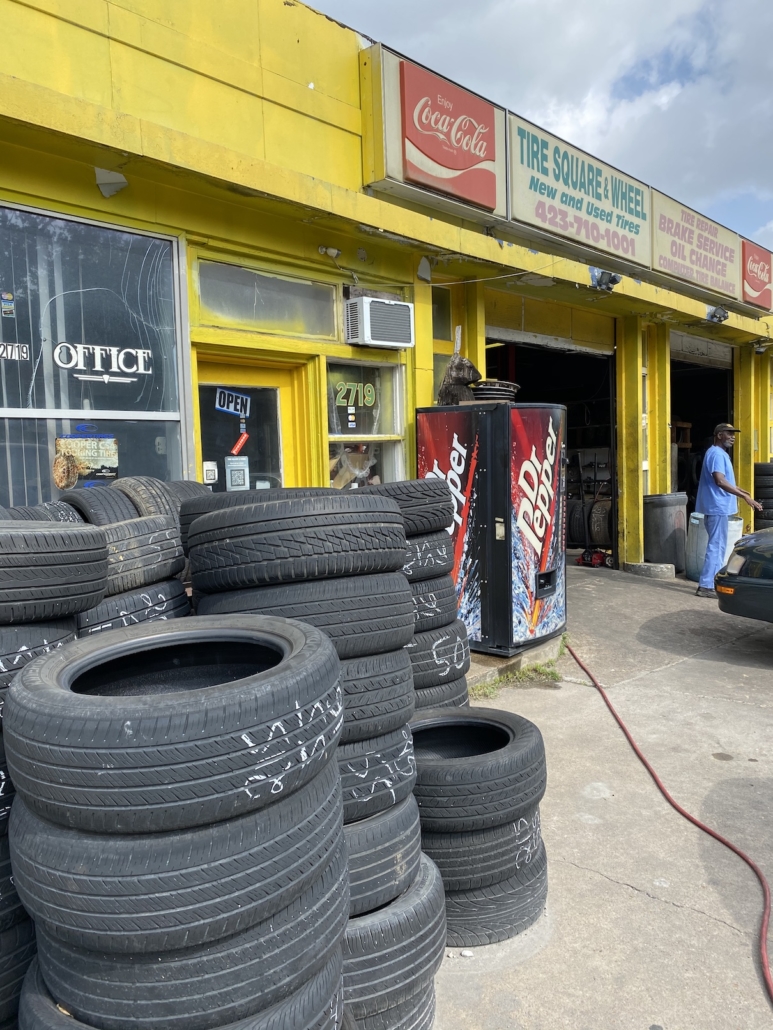The Scientific Research Behind Tire Repair and Safety
When it concerns the intricate world of tire upkeep and safety and security, there exists a realm of scientific research that often continues to be hidden by the ordinary driver - discount tires morris il. The materials that compose a tire, the impact of tire stress on general safety, the ramifications of walk wear, the intricate characteristics of tire grip, and the often-overlooked importance of appropriate wheel alignment all play vital duties in making sure a vehicle operates safely and effectively. As we navigate through the complexities of tire repair service and safety, it comes to be obvious that a deeper understanding of these scientific principles is not only useful yet essential for every single vehicle driver when driving
Tire Structure and Functionality
What materials make up the structure of tires, and exactly how do these parts add to their performance on the road? Tires are intricate products, typically made from a mix of rubber compounds, fabric, steel cables, and various other chemical ingredients. One of the most typical sort of rubber made use of in tires is synthetic rubber, which uses longevity and resistance to wear and tear. The fabric layers, frequently made from polyester, nylon, or rayon, supply stamina and security to the tire framework. Steel cables are incorporated to enhance the tire's strength and assist it maintain its form under various roadway conditions.
The rubber substances offer grip and grip, allowing the tire to stick to the road surface area and offer stability during velocity, stopping, and cornering. In general, the careful selection and mix of these products make sure that tires can perform effectively and safely on various road surface areas and problems.
Influence of Tire Pressure on Safety And Security
On the various other hand, overinflated tires have less call with the road surface, lowering grip and creating uneven wear on the tire footsteps. Correctly filled with air tires likewise play an important role in fuel performance, as underinflated tires can boost moving resistance, leading to reduced gas mileage. Regularly examining and preserving the right tire stress not just guarantees security however additionally expands the life expectancy of the tires, saving on substitute expenses in the lengthy run.
Footstep Put On and Its Ramifications
Proper tracking of tire step wear is vital for ensuring ideal efficiency and safety when traveling. As tires put on down, the depth of the walk decreases, minimizing the tire's ability to keep grip, particularly in slippery or damp conditions. The tread pattern and deepness play a vital function in channeling water away from the tire to avoid hydroplaning and keeping grasp when driving surface area.
Uneven wear may recommend problems with tire inflation, placement, or suspension parts. Use signs are developed into the tire walk and become visible when the walk deepness gets to a particular reduced point, indicating the requirement for instant replacement.

Recognizing Tire Traction Dynamics
Checking tire step wear not just makes sure optimum performance and safety but additionally directly influences the traction dynamics of the tires on different roadway surface areas. Tire grip is an important aspect of car handling and safety, as it determines the grasp in between the tires and the road. Traction dynamics vary depending upon road conditions such as completely dry pavement, damp roadways, snow, or ice.

Comprehending tire grip characteristics is essential for drivers to adjust visit site their driving actions according to the roadway conditions. morris tire service. Frequently checking tire tread depth and condition can substantially enhance traction efficiency, guaranteeing more secure driving experiences across various surface areas
Relevance of Correct Wheel Placement
Ensuring proper wheel positioning plays a critical role in optimizing car performance and prolonging tire longevity. Appropriate wheel positioning involves readjusting the angles of the wheels to maker requirements, guaranteeing that they are perpendicular to the ground and alongside each other. other When placement is off, it can bring about irregular tire wear, decreased fuel effectiveness, and compromised handling.
One of the crucial advantages of keeping correct wheel positioning is improved taking care of and stability. Misaligned wheels can cause the car to draw away, influencing guiding control and overall driving experience. Additionally, proper placement advertises also tire wear, protecting against early tire substitute and minimizing maintenance expenses in the lengthy run.

Final Thought
In final thought, the science behind tire repair and safety and security is essential for preserving lorry performance and guaranteeing driver safety and security. By understanding tire composition, stress, step wear, grip characteristics, and wheel alignment, vehicle drivers can stop crashes and prolong the lifespan of their tires.
The products that make up a tire, the influence of tire pressure on total safety, the ramifications of walk wear, the detailed dynamics of tire grip, and the often-overlooked significance of proper wheel alignment all play crucial duties in ensuring a car operates securely and successfully. On the various other hand, overinflated tires have much less contact with the roadway surface, reducing traction and causing uneven wear on the tire footsteps. Frequently inspecting and maintaining the correct tire stress not only guarantees safety and security yet additionally extends the lifespan of the tires, conserving on substitute expenses in the lengthy run.
Checking tire walk wear not only makes certain optimal performance and safety but also straight impacts the traction characteristics of the tires on different roadway surfaces. Tire grip is a crucial facet of automobile handling and security, as it figures out the hold in between the tires and the roadway.